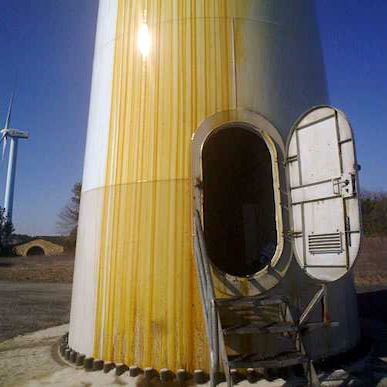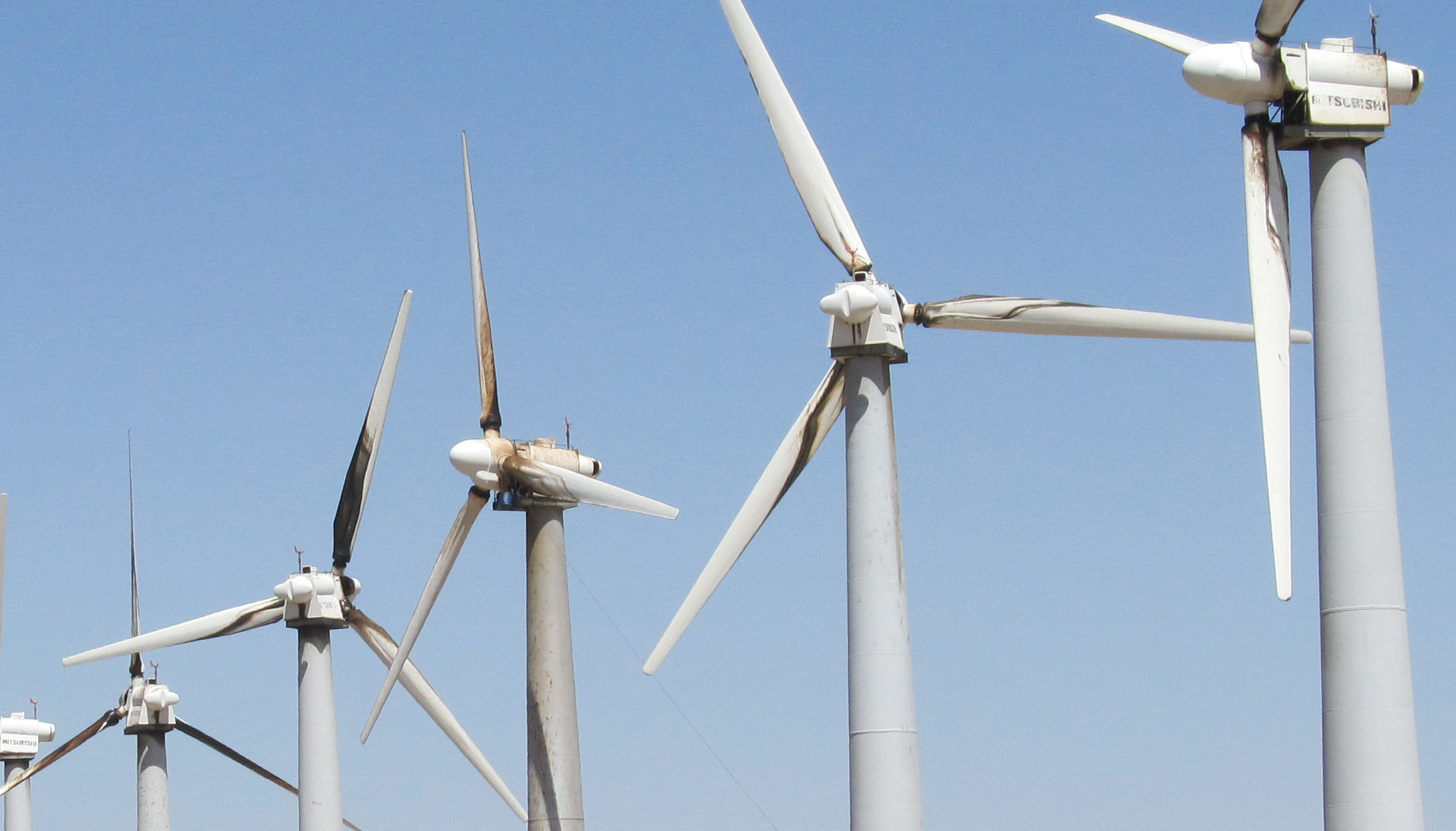Those things have destroyed the view of the Arbuckles on 35 north of Ardmore.
You are using an out of date browser. It may not display this or other websites correctly.
You should upgrade or use an alternative browser.
You should upgrade or use an alternative browser.
This site may earn a commission from merchant affiliate
links, including eBay, Amazon, and others.
This was published a couple of years ago by none other than that bastion of truth Newsweek.
Of course there has since been a rebuttal article published since and it's basically just talking points with very little data to refute this one. And yes they make a pretty big issue of the author's resume. Of course they do, they have to....
Of course there has since been a rebuttal article published since and it's basically just talking points with very little data to refute this one. And yes they make a pretty big issue of the author's resume. Of course they do, they have to....

As consumers, we pay for electricity twice: once through our monthly electricity bill and a second time through taxes that finance massive subsidies for inefficient wind and other energy producers.
Most cost estimates for wind power disregard the heavy burden of these subsidies on US taxpayers. But if Americans realized the full cost of generating energy from wind power, they would be less willing to foot the bill – because it’s more than most people think.
Over the past 35 years, wind energy – which supplied just 4.4% of US electricity in 2014 – has received US$30 billion in federal subsidies and grants. These subsidies shield people from the uncomfortable truth of just how much wind power actually costs and transfer money from average taxpayers to wealthy wind farm owners, many of which are units of foreign companies.
Financial advisory firm Lazard puts the cost of generating a megawatt-hour of electricity from wind at a range of $37 to $81. In reality, the true price tag is significantly higher.
This represents a waste of resources that could be better spent by taxpayers themselves. Even the supposed environmental gains of relying more on wind power are dubious because of its unreliability – it doesn’t always blow – meaning a stable backup power source must always be online to take over during periods of calm.
But at the same time, the subsidies make the US energy infrastructure more tenuous because the artificially cheap electricity prices push more reliable producers – including those needed as backup – out of the market. As we rely more on wind for our power and its inherent unreliability, the risk of blackouts grows. If that happens, the costs will really soar.
WHERE THE SUBSIDIES GO
Many people may be familiar with Warren Buffet’s claim that federal policies are the only reason to build wind farms in the US, but few realize how many of the companies that benefit most are foreign. The Investigative Reporting Workshop at American University found that, as of 2010, 84% of total clean-energy grants awarded by the federal government went to foreign-owned wind companies.
More generally, the beneficiaries of federal renewable energy policies tend to be large companies, not individual taxpayers or small businesses. The top five recipients of federal grants and tax credits since 2000 are: Iberdrola, NextEra Energy, NRG Energy, Southern Company and Summit Power, all of which have received more than $1 billion in federal benefits.
Iberdrola Renewables alone, a unit of a Spanish utility, has collected $2.2 billion in federal grants and allocated tax credits over the past 15 years. That’s equivalent to about 6.7% of the parent company’s 2014 revenue of $33 billion (in current US dollars).
President Obama’s proposed 2016 budget would permanently extend the biggest federal subsidy for wind power, the Production Tax Credit (PTC), ensuring that large foreign companies continue to reap most of the taxpayer-funded benefits for wind. The PTC is a federal subsidy that pays wind farm owners $23 per megawatt-hour through the first ten years of a turbine’s operation. The credit expired at the end of 2013, but Congress extended it so that all projects under construction by the end of 2014 are eligible.
In all, Congress has enacted 82 policies, overseen by nine different agencies, to support wind power.
I explained in December why Congress shouldn’t revive the PTC, which expired at the end of 2014. In this article, I’m adding up the true cost of wind power in the US, including the impact of the PTC and other subsidies and mandates. It’s part of a study I’m doing of other energy sources including solar, natural gas, and coal to determine how much each one actually cost us when all factors are considered.
TALLYING THE TRUE COSTS OF WIND
Depending on which factors are included, estimates for the cost of wind power vary wildly. Lazard claims the cost of wind power ranges from $37 to $81 per megawatt-hour, while Michael Giberson at the Center for Energy Commerce at Texas Tech University suggests it’s closer to $149. Our analysis in an upcoming report explores this wide gap in cost estimates, finding that most studies underestimate the genuine cost of wind because they overlook key factors.
All estimates for wind power include the cost of purchasing capital and paying for operations and maintenance (O&M) of wind turbines. For the studies we examined, capital costs ranged from $48 to $88 per megawatt-hour, while O&M costs ranged from $9.8 to $21 per megawatt-hour.
Many estimates, however, don’t include costs related to the inherent unreliability of wind power and government subsidies and mandates. Since we can’t ensure the wind always blows, or how strongly, coal and natural gas plants must be kept on as backup to compensate when it’s calm. This is known as baseload cycling, and its cost ranges from $2 to $23 per megawatt-hour.
This also reduces the environmental friendliness of wind power. Because a coal-fired or natural gas power plant must be kept online in case there’s no wind, two plants are running to do the job of one. These plants create carbon emissions, reducing the environmental benefits of wind. The amount by which emissions reductions are offset by baseload cycling ranges from 20% to 50%, according to a modeling study by two professors at Carnegie Mellon University.
While the backup plants are necessary to ensure the grid’s reliability, their ability to operate is threatened by wind subsidies. The federal dollars encourage wind farm owners to produce power even when prices are low, flooding the market with cheap electricity. That pushes prices down even further and makes it harder for more reliable producers, such as nuclear plants, that don’t get hefty subsidies to stay in business.
For example, the Kewaunee Nuclear Plant in Wisconsin and the Yankee Nuclear Plant in Vermont both switched off their reactors in 2013. Dominion Energy, which owned both plants, blamed the artificially low prices caused by the PTC as one of the reasons for the shutdown.
As more reliable sources drop off and wind power takes their place, consumers are left with an electrical infrastructure that is less reliable and less capable of meeting demand.
LOST IN TRANSMISSION
Another factor often overlooked is the extra cost of transmission. Many of America’s wind-rich areas are remote and the turbines are often planted in open fields, far from major cities. That means new transmission lines must be built to carry electricity to consumers. The cost of building new transmission lines ranges from $15 to $27 per megawatt-hour.
In 2013, Texas completed its Competitive Renewable Energy Zone project, adding over 3,600 miles of transmission lines to remote wind farms, costing state taxpayers $7 billion.
Although transmission infrastructure may be considered a fixed cost that will reduce future transmission costs for wind power, these costs will likely remain important. Today’s wind farms are built in areas with prime wind resources. If we continue to subsidize wind power, producers will eventually expand to sub-prime locations that may be even further from population centers. This would feed demand for additional transmission projects to transport electricity from remote wind farms to cities.
THE FINAL BILL COMES TO…
Finally, federal subsidies and state mandates also add significantly to the cost, even as many estimates claim these incentives actually reduce the cost of wind energy. In fact, they add to it as American taxpayers are forced to foot the bill. According to Giberson, federal and state policies add an average of $23 per megawatt-hour to the cost of wind power.
That includes the impact of state mandates, which end up increasing the cost of electricity on consumer power bills. California is one of the most aggressive in pushing so-called Renewable Portfolio Standards (RPS), requiring the state to consume 33% of its electricity from renewables by 2020. Overall electricity prices in states with RPS are 38% higher than those without, according to the Institute for Energy Research, a non-profit research group that promotes free markets.
The best estimate available for the total cost of wind power is $149 per megawatt-hour, taken from Giberson’s 2013 report.
It is difficult to quantify some factors of the cost of wind power, such as the cost of state policies. Giberson’s estimate, however, includes the most relevant factors in attempting to measure the true cost of producing electricity from wind power. In future reports, Strata will explore the true cost of producing electricity from solar, coal, and natural gas. Until those reports are completed, it is difficult to accurately compare the true cost of wind to other technologies, as true cost studies have not yet been completed.
BLOWING IN THE WIND
The high costs of federal subsidies and state mandates for wind power have not paid off for the American public. According to the Mercatus Center at George Mason University, wind energy receives a higher percentage of federal subsidies than any other type of energy while generating a very small percentage of the nation’s electricity.
In 2010 the wind energy sector received 42% of total federal subsidies while producing only 2% of the nation’s total electricity. By comparison, coal receives 10% of all subsidies and generates 45% and nuclear is about even at about 20%.
But policymakers at the federal and state level, unfortunately, have decided that the American people will have renewable energy, no matter how high the costs. As a result, taxpayers will be stuck paying the cost of subsidies to wealthy wind producers.
Meanwhile, electricity consumers will be forced to purchase the more expensive power that results from state-level mandates for renewable energy production. Although such policies may be well intended, the real results will be limited freedom, reduced prosperity and an increasingly unreliable power supply.
http://www.newsweek.com/whats-true-cost-wind-power-321480?platform=hootsuite
...and we'll look forward to an FGST chicken fry a couple of days later.I'm going to go put out a couple of my pet lesser prairie chickens over there in a couple of weeks.
Speaking of oil. Have you seen the mess one of these things makes when they breakdown and start leaking oil from their casings?The "new oil" will do more damage to our way of life and ecosystem than drilling ever thought about doing ... imho, anyway ... hopefully I will be dead and gone by the time ...


2 gigawatts? Would've thought 1.21 gigawatts would be enough....
I'm getting a couple three or so windmills on my place if they get their way.
Fighting them as we speak, not too far from where we had the ENS last weekend. My primary deer hunting ground.
I have offers from two different companies wanting to lease for future speculation, and then I saw an article that they forgot to mention showing a map of the proposed site with completion dates that are not speculative at all.
I read through the contract, and nowhere can I find a provision to remove the towers once the subsidies quit, and the company goes insolvent, returning the land to its natural state.
As I read it, they can invoke eminent domain for the better good of the country.
My attorney has a copy of the proposed lease agreement.
Fighting them as we speak, not too far from where we had the ENS last weekend. My primary deer hunting ground.
I have offers from two different companies wanting to lease for future speculation, and then I saw an article that they forgot to mention showing a map of the proposed site with completion dates that are not speculative at all.
I read through the contract, and nowhere can I find a provision to remove the towers once the subsidies quit, and the company goes insolvent, returning the land to its natural state.
As I read it, they can invoke eminent domain for the better good of the country.
My attorney has a copy of the proposed lease agreement.
2 gigawatts? Would've thought 1.21 gigawatts would be enough....
String up the cable and we'll figure it out.

Absolutely. That drive between Ponca and Pawhuska has always been beautiful with the bluffs, and immense amount of open land that would freek out somebody used to urban living. Nothing but grass and cows as far as the eye could see, with a few pump jacks inbetween.They are an eye sore there is a bunch between Dennis and I looks like crap if you ask me and others around here
As I read in the Osage News, they kind of snuck those towers in there on a couple of big ranches. Tribe fought and won to stop a bigger windfarm but the court allowed those under construction to complete the work. There were trucks running down hwy 60 day and night getting the rest of the equipment in there before the court order.
Another new one is going in South of Ponca in the Red Rock area. I can see 4 towers from my recliner. I hate watching them.
All brought on by the global warming crowd. I wish Trump would kill them now.
Dennis it WAS the same way out by Taloga. They have a farm just to the south of there now. Actually if you just head south from there you see wind farms all the way to damn near Lawton. They're fawking up our state!
And they DO pollute and just imagine this in a bad drought out there!


And they DO pollute and just imagine this in a bad drought out there!


There is NO place in Kay county that you can have a clear view of the horizon without a wind farm in view.
Similar threads
- Replies
- 51
- Views
- 4K
- Replies
- 84
- Views
- 8K
- Replies
- 71
- Views
- 10K
Join the conversation!
Join today and get all the highlights of this community direct to your inbox. It's FREE!
- Curated content sent daily, so you get what's interesting to you!
- No ads, no large blocks of text, just highlights for easy digest
- It's all totally free!
Enter your email address to join:
Thank you for joining!
Already
a member? Click here to log in








